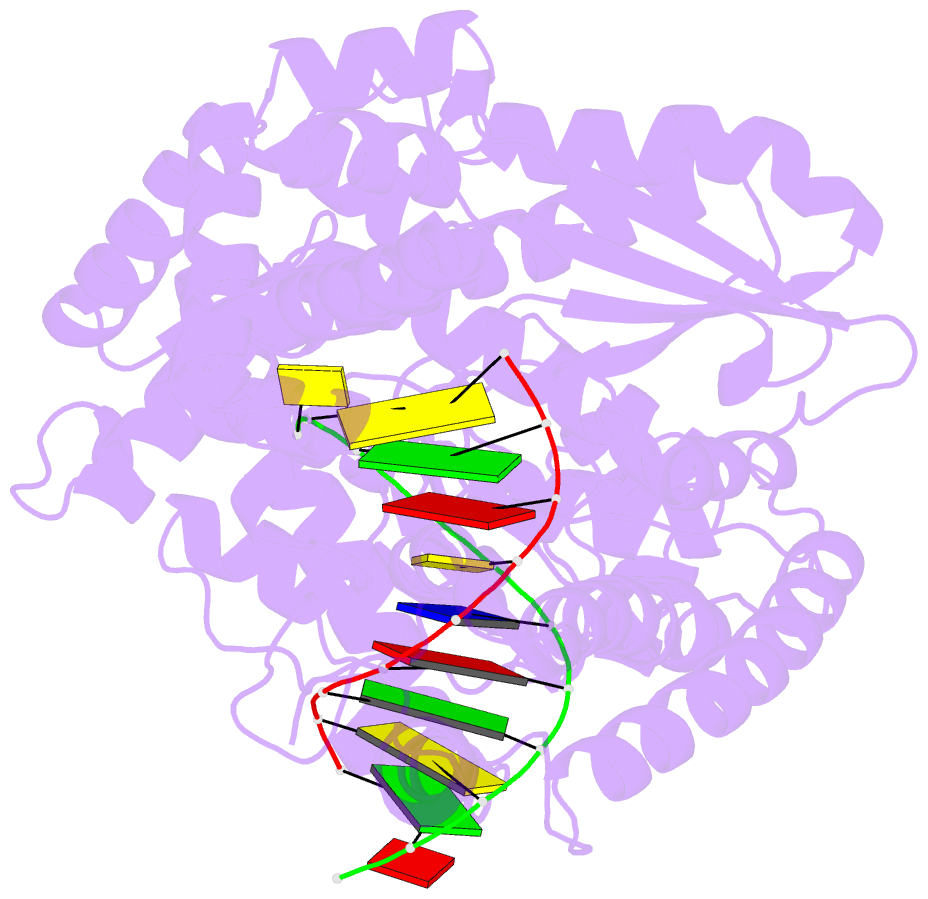Summary information and primary citation
- PDB-id
- 6ur4; SNAP-derived features in text and JSON formats;
DNAproDB
- Class
- replication-DNA
- Method
- X-ray (2.25 Å)
- Summary
- DNA polymerase i large fragment from bacillus stearothermophilus with DNA template and 3'-amino primer
- Reference
- Lelyveld VS, Zhang W, Szostak JW (2020): "Synthesis of phosphoramidate-linked DNA by a modified DNA polymerase." Proc.Natl.Acad.Sci.USA, 117, 7276-7283. doi: 10.1073/pnas.1922400117.
- Abstract
- All known polymerases copy genetic material by catalyzing phosphodiester bond formation. This highly conserved activity proceeds by a common mechanism, such that incorporated nucleoside analogs terminate chain elongation if the resulting primer strand lacks a terminal hydroxyl group. Even conservatively substituted 3'-amino nucleotides generally act as chain terminators, and no enzymatic pathway for their polymerization has yet been found. Although 3'-amino nucleotides can be chemically coupled to yield stable oligonucleotides containing N3'→P5' phosphoramidate (NP) bonds, no such internucleotide linkages are known to occur in nature. Here, we report that 3'-amino terminated primers are, in fact, slowly extended by the DNA polymerase from B. stearothermophilus in a template-directed manner. When its cofactor is Ca2+ rather than Mg2+, the reaction is fivefold faster, permitting multiple turnover NP bond formation to yield NP-DNA strands from the corresponding 3'-amino-2',3'-dideoxynucleoside 5'-triphosphates. A single active site mutation further enhances the rate of NP-DNA synthesis by an additional 21-fold. We show that DNA-dependent NP-DNA polymerase activity depends on conserved active site residues and propose a likely mechanism for this activity based on a series of crystal structures of bound complexes. Our results significantly broaden the catalytic scope of polymerase activity and suggest the feasibility of a genetic transition between native nucleic acids and NP-DNA.





